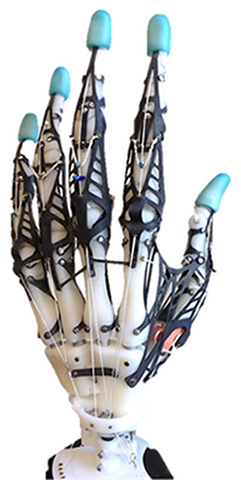 IEEE Spectrum highlights the work of UW CSE Ph.D. alum (and current Yale postdoc) Zhe Xu and CSE and Applied Mathematics professor Emo Todorov, who developed a robotic hand that achieves true human-like dexterity and could serve as a model for the development of neuroprosthetics and limb regeneration research.
IEEE Spectrum highlights the work of UW CSE Ph.D. alum (and current Yale postdoc) Zhe Xu and CSE and Applied Mathematics professor Emo Todorov, who developed a robotic hand that achieves true human-like dexterity and could serve as a model for the development of neuroprosthetics and limb regeneration research.
From the article:
“Because of the inherent complexity of a real human hand, biomimetic anthropomorphic hands inevitably involve lots of compromises to get them to work properly while maintaining a human-ish form factor. Zhe Xu and Emanuel Todorov from the University of Washington, in Seattle, have gone crazy and built the most detailed and kinematically accurate biomimetic anthropomorphic robotic hand that we’ve ever seen, with the ultimate goal of replacing human hands completely….”
“Besides being an extraordinarily beautiful piece of craftsmanship, the UW hand is able to very closely mimic a wide variety of grasps when controlled with a waldo remote manipulator. Users can also perform complicated in-hand manipulation without force feedback, which the researchers attribute to the kinematics of their hand so closely matching that of a real human hand.”
The article describes how Xu and Todorov were able to mimic the structure of a human hand using a combination of 3-D printing (bones), polyethylene strings (ligaments and tendons), and laser-cut rubber sheets (soft tissue).
This is a really cool piece of technology from UW CSE’s Movement Control Laboratory. Read the full article and view a video demonstration at IEEE Spectrum here, and read the research paper here. Check out the Gizmodo article here.

